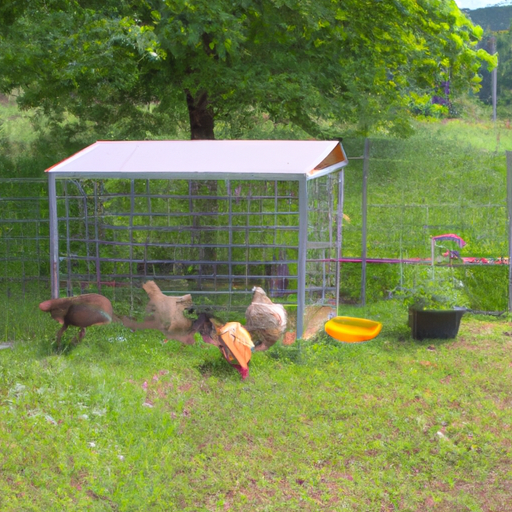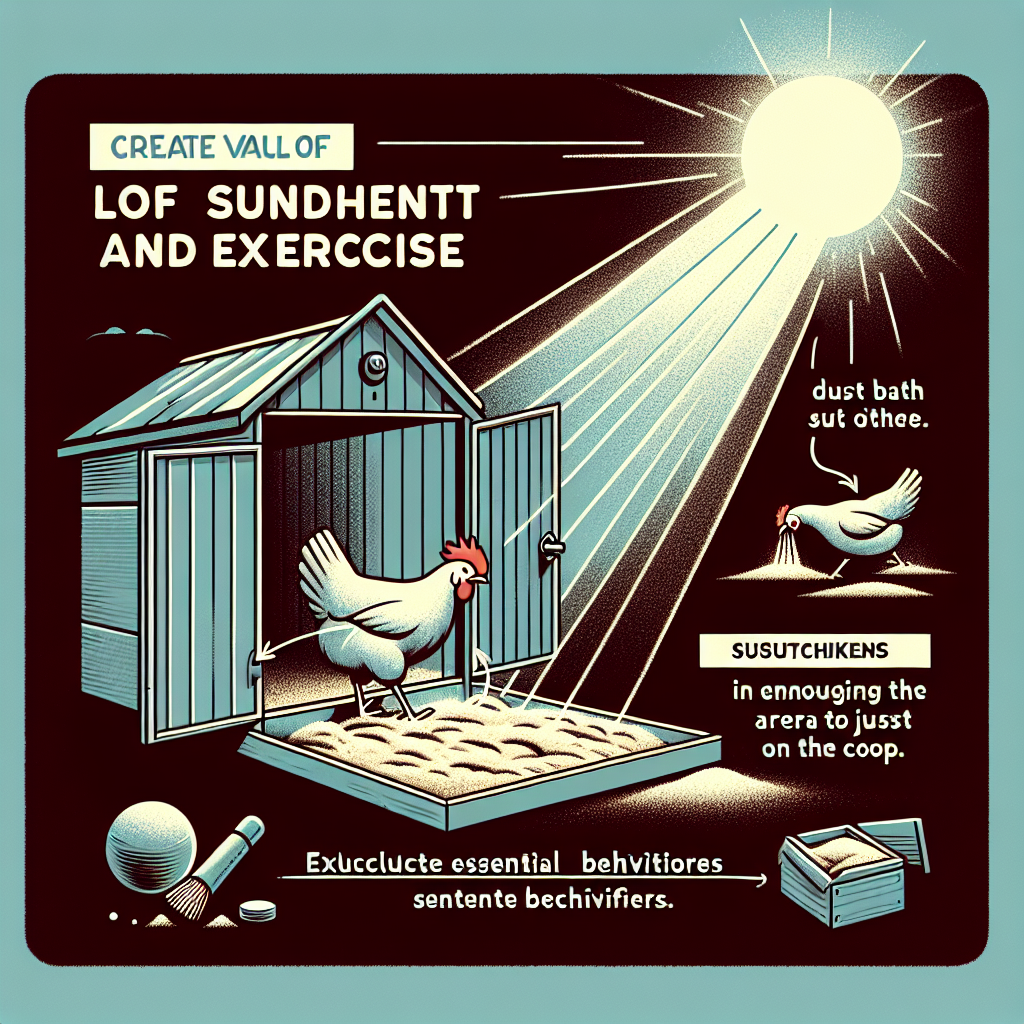If you’re thinking about raising chickens, one important aspect to consider is how much space they need. Ensuring that your feathered friends have enough room to roam and stretch their wings is essential for their overall well-being. In this article, we’ll explore the typical space requirements for chickens, providing you with the necessary information to create a comfortable and spacious environment for your flock.
Space Requirements for Chickens
Understanding the Importance of Adequate Space
When it comes to raising chickens, providing adequate space is crucial for their well-being and overall health. Chickens, despite their small size, have specific requirements for space to thrive and exhibit natural behaviors. Insufficient space can lead to a range of problems, including health issues and behavioral abnormalities. Understanding the importance of adequate space for chickens is the first step in creating a successful and fulfilling environment for them.
Factors to Consider when Determining Space Requirements
Several factors come into play when determining the space requirements for chickens. It is essential to consider breed-specific needs, including their size, activity level, and behavior. Additionally, understanding minimum space requirements, both indoors and outdoors, is vital for providing a comfortable living environment. Coop and roosting space, nesting box space, flock size considerations, and special considerations for certain chicken types should also be taken into account. By considering these factors, you can ensure that your chickens have enough space to live a healthy and happy life.
1. Breed-Specific Considerations
Different Breeds, Different Needs
Chickens come in various breeds, and each breed has unique characteristics and requirements. Some chicken breeds are larger and more active, while others are smaller and less active. These differences in size and activity level directly influence their space requirements. For example, larger breeds, such as the Jersey Giant or Brahma, need more space due to their size. Understanding the specific needs of your chicken breed is essential in determining the appropriate space to provide for them.
Space Requirements for Popular Chicken Breeds
Popular chicken breeds, such as the Rhode Island Red, Sussex, or Leghorn, have specific space requirements that are generally applicable to their breed type. As a general guideline, each chicken should have a minimum of 4 square feet of space in the coop and a minimum of 8-10 square feet in the outdoor run. However, it is crucial to research specific requirements for popular chicken breeds to ensure they have enough space for proper movement and exercise.
2. Minimum Space Requirements
General Guidelines for Minimum Space
While breed-specific requirements vary, there are general guidelines that can help determine the minimum space requirements for chickens. For each chicken, a minimum of 4 square feet of space in the coop is recommended. In the outdoor run, each chicken should have a minimum of 8-10 square feet of space. These numbers should be considered the absolute minimum, and providing more space is always beneficial for the well-being of your chickens.
Minimum Space Requirements for Different Chicken Types
The minimum space requirements for chickens can vary depending on the type of chickens and the purpose for raising them. For example, layers and dual-purpose chickens, which are raised for both meat and eggs, generally require more space than broilers, which are specifically bred for fast growth and meat production. While a minimum of 4 square feet per chicken in the coop is considered suitable for most chickens, it is essential to research specific minimum space requirements for your chicken type.
Considerations for Confinement or Free-Range Systems
When determining space requirements, it is important to consider whether your chickens will be raised in a confinement or free-range system. Confinement systems limit the chickens’ access to outdoor space, which means they rely solely on the indoor area. In contrast, free-range systems provide access to outdoor areas, allowing chickens to exhibit natural behaviors and forage for food. Free-range chickens generally require less indoor space, as they have the option to spend a significant amount of time outdoors. However, regardless of the system, providing sufficient space in both the indoor and outdoor areas is crucial for the well-being of your chickens.
3. Indoor Area Space
Calculating Required Space for Indoor Areas
The indoor area of the chicken coop is where chickens spend most of their time, especially during the night and adverse weather conditions. Calculating the required space for the indoor area is necessary to ensure your chickens have enough room to move freely and engage in natural behaviors. As a general rule, each chicken should have a minimum of 4 square feet of space in the coop. However, it is advisable to provide more space if possible, as additional space allows for better ventilation and reduces stress among the flock.
Factors Affecting Indoor Space Requirements
Several factors can affect the indoor space requirements for chickens. Firstly, the breed type and size directly influence the amount of space needed. Larger breeds require more space to move comfortably, while smaller breeds can manage with slightly less space. Additionally, the coop’s design, including the height and layout, can influence the available space for the chickens. It is important to consider these factors when determining the indoor space requirements for your chickens.
Tips for Maximizing Indoor Space Efficiency
Even with limited indoor space, there are ways to maximize its efficiency and provide a comfortable environment for your chickens. Utilizing vertical space by incorporating roosting bars and multi-level platforms can help increase the usable area in the coop. Implementing removable or foldable nesting boxes can save space when not in use. Additionally, regularly cleaning the coop and managing waste effectively can prevent overcrowding and maintain a healthy living environment for your chickens.
4. Outdoor Run Space
Determining Optimal Outdoor Run Space
Allowing your chickens access to an outdoor run provides them with additional space to exercise, forage for food, and engage in natural behaviors. Determining the optimal outdoor run space depends on factors such as the number of chickens, breed type, and available land. As a general guideline, each chicken should have a minimum of 8-10 square feet of outdoor run space. However, more space is always beneficial, as it allows chickens to roam freely and explore their surroundings.
Benefits of Sufficient Outdoor Run Space
Providing sufficient outdoor run space offers various benefits for your chickens. It allows them to engage in natural behaviors such as scratching, dust bathing, and pecking for insects and plants. Access to a diverse outdoor environment promotes physical and mental stimulation, which contributes to their overall well-being. Additionally, outdoor space helps reduce boredom and stress, leading to healthier and happier chickens.
Ensuring Security and Protection in Outdoor Areas
When designing and setting up the outdoor run, it is vital to ensure the security and protection of your chickens. Fencing the outdoor area with predator-proof material, burying the fence underground to prevent digging, and covering the top of the run can help protect your chickens from predators such as dogs, raccoons, or birds of prey. Providing adequate shelter, shade, and natural elements like plants and hiding spots also contribute to a safe and enriching outdoor environment for your chickens.
5. Coop and Roosting Space
Providing Sufficient Coop and Roosting Space
While chickens spend a significant amount of time in the coop, it is important to provide adequate space for them to rest and roost comfortably. Each chicken should have enough space on the roosting bar to perch without overcrowding. The general guideline is to have at least 6-12 inches of roosting space per chicken. This space allows chickens to spread their wings fully and helps prevent aggressive behavior resulting from cramped roosting areas.
Design Considerations for Coop and Roosting Areas
When designing the coop and roosting areas, certain considerations can enhance their functionality and comfort. Providing rounded roosting bars with a diameter of at least 2 inches can ensure a comfortable grip for your chickens. It is important to avoid using narrow or flat-roofed roosting bars, as they can cause discomfort and foot problems. Additionally, ensuring proper ventilation and natural lighting in the coop contributes to a healthy and inviting space for your chickens.
Importance of Proper Ventilation and Lighting
Proper ventilation and lighting are crucial elements in the coop that directly impact the health and well-being of your chickens. Sufficient ventilation helps remove excess moisture, ammonia, and odors, promoting good air quality and preventing respiratory issues. Adequate natural or artificial lighting supports the chickens’ circadian rhythm and influences their egg production. Ensuring proper ventilation and lighting in the coop enhances overall comfort and health for your chickens.
6. Nesting Box Space
Allocating Adequate Space for Nesting Boxes
Nesting boxes provide a safe and comfortable place for hens to lay their eggs. Allocating adequate space for nesting boxes is essential to ensure the comfort and privacy of your laying hens. As a general guideline, each nesting box should be approximately 12×12 inches in size. Allocating one nesting box for every 4-5 hens is typically sufficient, but providing additional boxes can reduce competition and encourage nest-sharing behaviors.
Factors to Consider when Designing Nesting Boxes
When designing nesting boxes, several factors should be considered to create an optimal environment for your hens. Providing a dark and secluded area for the nesting boxes helps reduce disturbances and encourages hens to use them consistently. Incorporating clean and soft bedding materials, such as straw or wood shavings, enhances comfort and cleanliness. Additionally, ensuring easy access to the nesting boxes and proper maintenance can contribute to stress-free egg-laying and overall nest box utilization.
Ensuring Comfort and Privacy for Laying Hens
Comfort and privacy are essential factors for your laying hens to feel secure when using the nesting boxes. Placing the nesting boxes in a quiet and secluded area of the coop helps create a calm and peaceful environment for the hens. Regularly inspecting and cleaning the nesting boxes to maintain cleanliness and removing eggs promptly contributes to a hygienic and inviting space for your laying hens.
7. Flock Size Considerations
Calculating Space Requirements based on Flock Size
The size of your flock directly affects the overall space requirements. When calculating space requirements, consider the number of chickens you have and the space needed per chicken. As a general guideline, each chicken should have a minimum of 4 square feet of indoor space and 8-10 square feet of outdoor run space. By multiplying these space requirements by the number of chickens in your flock, you can determine the total space needed for your chicken housing setup.
Issues Arising from Overcrowded Flocks
Overcrowding can have detrimental effects on the health and well-being of chickens. When chickens are overcrowded, it can lead to stress, aggression, and increased risk of disease transmission. Overcrowded flocks may also result in inadequate access to food and water, resulting in nutritional deficiencies. Additionally, cramped conditions can lead to feather pecking, cannibalism, and other behavioral issues. Avoiding overcrowding by providing sufficient space for your flock is essential in maintaining their overall health and happiness.
Best Practices for Managing Flock Size and Space
To manage the flock size and space effectively, it is important to consider certain best practices. Regularly assessing the number of chickens and monitoring their behavior and health can help identify any overcrowding issues. If necessary, consider reducing the flock size by rehoming or providing a separate living arrangement for some chickens. Adequate space management includes periodically cleaning and disinfecting the coop, properly maintaining nesting boxes, and monitoring feed and water availability to ensure all chickens have equal access.
8. Special Considerations for Certain Chickens
Bantam Chickens: Smaller but Still Need Space
Bantam chickens, known for their smaller size, still require adequate space to lead a healthy and fulfilling life. While they may need less space than larger chicken breeds, they still need room to move and engage in natural behaviors. As a general guideline, each bantam chicken should have a minimum of 2-3 square feet of indoor space and 4-6 square feet of outdoor run space. Providing sufficient space allows bantam chickens to exhibit their natural behaviors and maintain their overall well-being.
Broiler Chickens: Additional Space Requirements
Broiler chickens, which are specifically bred for meat production, have different space requirements compared to other chicken types. They grow at an accelerated rate and tend to have higher body weights. As a result, providing sufficient space is crucial to prevent overcrowding and ensure proper growth and development. Each broiler chicken should have a minimum of 2-3 square feet of indoor space and 6-8 square feet of outdoor run space. These additional space requirements accommodate their rapid growth and provide a comfortable living environment.
Waterfowl and Game Birds: Unique Space Requirements
Waterfowl, such as ducks and geese, as well as game birds like quail and pheasants, have unique space requirements that differ from chickens. Waterfowl, known for their aquatic habits, require access to water sources such as ponds, pools, or shallow containers. Providing water sources with ample space for swimming and foraging is crucial for their physical and behavioral needs. Game birds, on the other hand, often live in aviaries or specialized enclosures with sufficient space for flying and perching. Understanding the specific space requirements of waterfowl and game birds is essential for providing an appropriate living environment.
10. Potential Health and Behavioral Issues
Space-Related Health Problems in Chickens
Insufficient space can lead to various health problems in chickens. Overcrowding increases the risk of respiratory infections, as poor ventilation and close proximity can facilitate the spread of airborne diseases. Lack of space can also result in excessive scratching, pecking, and feather pulling, leading to injuries and infections. Additionally, cramped conditions can contribute to stress, which weakens the immune system and makes chickens more susceptible to diseases. Providing adequate space helps prevent these health issues and promotes overall chicken well-being.
Behavioral Issues Arising from Insufficient Space
Chickens that do not have enough space may develop behavioral issues. Overcrowding often leads to aggression, as chickens compete for limited resources and establish a pecking order. Feather pecking, cannibalism, and aggressive behaviors can arise due to stress and frustration resulting from cramped conditions. Inadequate space also limits natural behaviors such as foraging, dust bathing, and exploring, which can lead to boredom and abnormal behaviors. Providing sufficient space allows chickens to exhibit their natural behaviors and reduces the chances of developing behavioral issues.
Prevention and Solution for Space-Induced Problems
Preventing and addressing space-induced problems in chickens requires proactive measures in providing the right amount of space. Regularly monitoring the flock’s health and behavior can help identify overcrowding and address it promptly. Increasing the available space, either by expanding the coop or providing additional outdoor run areas, can alleviate overcrowding issues. Offering enrichments such as perches, toys, and access to natural elements like grass or soil can also help reduce boredom and mitigate behavioral problems. Implementing proper biosecurity measures and consulting with poultry experts can contribute to preventing and managing space-related issues effectively.
In conclusion, understanding the space requirements for chickens is crucial for providing a healthy and fulfilling environment for these feathered friends. By considering breed-specific needs, minimum space requirements, and various other considerations such as coop design, flock size, and special chicken types, you can ensure that your chickens have enough space to live comfortably. Providing adequate indoor and outdoor space, coop and roosting areas, nesting boxes, and considering the specific needs of each breed or type of chicken will contribute to their overall well-being and enable them to exhibit natural behaviors. By prioritizing space requirements, you can create a thriving and rewarding environment for your chickens.




